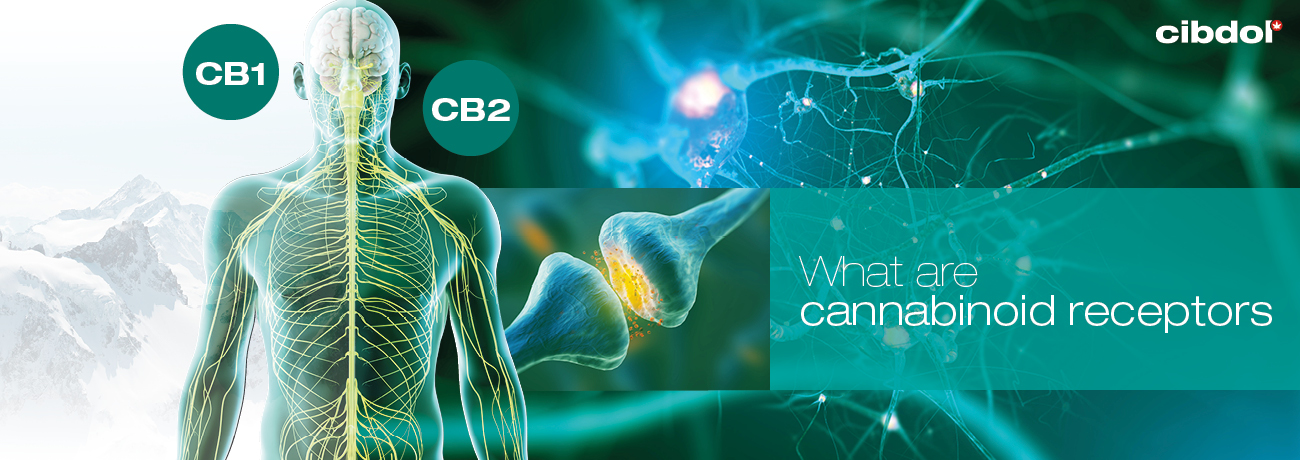How do cannabinoid receptors work?
How do cannabinoid receptors work?

Cannabinoid receptors are found throughout your body. More importantly, they are a kind of entry point for substances that can support your health. Find out below what cannabinoid receptors are and how they work.
What are cannabinoid receptors?
Cannabinoid receptors are advanced so-called G-protein-coupled receptors [1] that help your body respond to different substances. Let’s use a simple metaphor below to see what this means.
Imagine cannabinoid receptors as an antenna, like on a car or television.
The antenna on your car receives signals from an external source and sends this information to your car radio. But to avoid receiving all radio stations at once, frequencies are assigned to these. All you have to do is tune your radio to the right station and the antenna will continue to receive the signal.
Cannabinoid receptors work in the same way. But now for a moment we replace the car with your body and the radio with various cells and biological functions.
Cannabinoid receptors help process chemical compounds and receive and send their information to cells in your body. These cells then use the information to regulate vital functions. Consider your sleep, mood, appetite, metabolism and immune response.
When were cannabinoid receptors discovered?
We now know quite a bit about the important role cannabinoid receptors play in health. Still, this is a fairly recent discovery, at least by scientific standards.
– 1980s – Scientists discover CB1 receptors.
– 1992 – The endocannabinoid system (ECS) comes into focus. This extensive network connects all cannabinoid receptors.
– 1993 – Identification of CB2, the second cannabinoid receptor.
So far, scientists have identified two main types of cannabinoid receptors (CB1 and CB2). However, it took quite a long time for these receptors to be discovered. This has everything to do with how they are activated.
There are chemicals in your body that interact with the CB1 and CB2 receptors. But the compounds in Cannabis sativa encourage an even greater number of interactions.
Under Cannabis sativa, of course, we count hemp (the main source of CBD). However, it also includes illegal varieties, such as marijuana. As you might imagine, it is quite a challenge to study the effect of cannabinoid receptors when one of the best test objects (cannabis) is widely banned.
How do cannabinoid receptors work?
With respect to both CB1 and CB2 receptors, there are two main groups of compounds with which they interact. The first compounds are the neurochemicals found in your body and the second group consists of phytocannabinoids found mainly in Cannabis sativa, such as CBD.
Despite the difference in origin, internal and external compounds interact with CB receptors in the same way. Namely, through a lock and key mechanism.
To create an interaction, connections must have the right form. In more technical terms, by this we mean that they must have the right chemical structure. CB1 and CB2 receptors both have slightly different “locks” and only accept compounds with a matching shape, or “key. Thanks to this biological lock and key mechanism, compounds like CBD interact only with specific receptors, not all of them.
Where do we find cannabinoid receptors?
As mentioned earlier, cannabinoid receptors are involved in receiving and sending signals. Receptors in your immune system, for example, send signals that promote your inflammatory response, while receptors in your brain influence your mood and appetite, among other things.
It is important to emphasize that CB1 and CB2 receptors do not coexist, but occur in different locations in your body. For example, your brain contains the majority of CB1 receptors, while your digestive system contains an abundance of CB2 receptors.
Areas with the highest concentration of cannabinoid receptors include:
– Brain (central nervous system)
– Liver
– Reproductive system
– Cardiovascular system
– Skin
– Gastrointestinal tract
– Immune system
– Peripheral nervous system
How many cannabinoid receptors are there in your body?
Researchers are working hard to find out what the identified cannabinoid receptors can offer us all and what role they can play in our well-being. Since receptors are found from head to toe in the body, there is still much to explore.
In addition to CB1 and CB2, scientists believe there are a handful of other receptors that work similarly. But CB receptors are still a fairly recent discovery, so there is still much to learn about this as well.
How does CBD act on cannabinoid receptors?
We conclude this article by asking how cannabinoid receptors interact with CBD. In fact, CB1 and CB2 receptors do not have much interest in CBD, but that does not mean there is no interaction at all.
In fact, CBD plays a more supportive role in terms of cannabinoid receptors. Thus, the interaction does not take place directly, but CBD encourages the connection of receptors with other compounds. The benefit of that stronger connection is a more pronounced result. Going back for a moment to our example with the car radio, the stronger the signal, the higher the quality and the better the sound.
So CBD is actually a kind of “general director” and keeps the entire network of receptors functioning properly. With a fully functioning system of cannabinoid receptors, your body is then better equipped to deal with diseases that can throw you off balance.
Want to experience the mediating effects of CBD for yourself? Then visit the Webshop store for a complete range of CBD oils, capsules and cosmetics. Have you become intrigued by the possibilities of cannabinoid receptors and the ECS?
Resources
[1] Mackie, K. (2018). Cannabinoid receptors: where they are and what they do. PubMed. https://pubmed.ncbi.nlm.nih.gov/18426493/ [Bron]
[2] Ryberg, E., Larsson, N., & Sjögren, S. (2007). The orphan receptor GPR55 is a novel cannabinoid receptor. NCBI. https://www.ncbi.nlm.nih.gov/pmc/articles/PMC2095107/ [Bron]